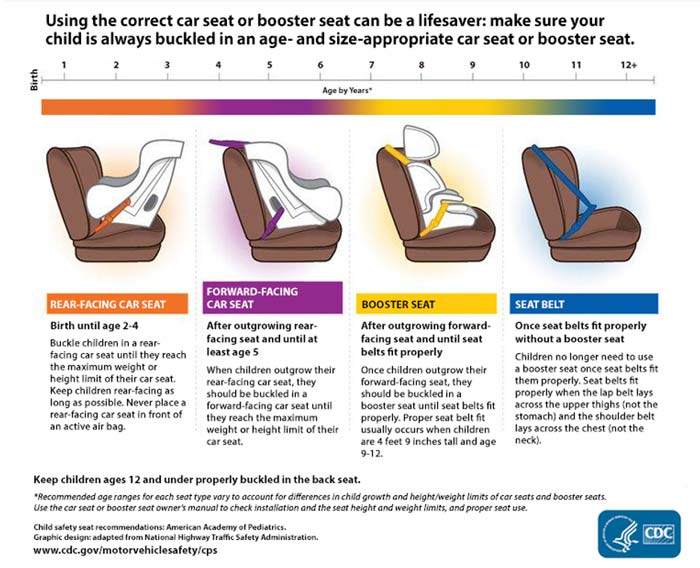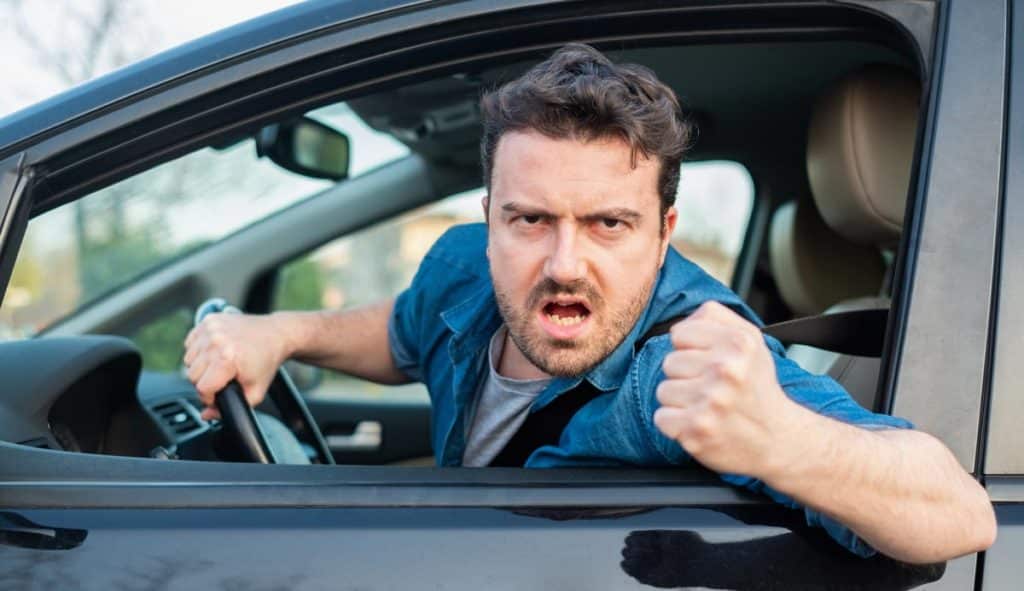The school year has started up again and with it, extracurricular activities. Kids who have stayed close to home all summer now need to be driven to school, practice, rehearsal, tutoring, and all sorts of other fun and educational activities.
While kids are probably pleased with the return to classes with friends (and less happy about the return of homework), it’s not all fun and games. More time on the road has its drawbacks. According to the National Highway Traffic Safety Administration (NHTSA), car accidents are a leading cause of death for children nationwide. Spending more time in care increases the risk that a child will be in an accident and be seriously hurt or injured.
Because of this, the third full week of September is National Child Passenger Safety Week. This year that falls on the 20th through the 26ths of September. The week is intended to raise awareness of the dangers that child passengers face – in particular, children who still need a car seat. Even the best drivers on the road are still vulnerable to someone else’s moment of inattention. Keeping your child safely restrained in your car can be the difference between a scary story to tell at school and a tragedy.
Luckily, there are plenty of ways to keep kids safe while on the road. Understanding the safety measures for which Child Passenger Safety Week is intended to raise awareness will keep your child safer no matter what.
Make Sure Kids Use the Right Car Seat
Using the right car seat and using it correctly can reduce the risk of a car accident fatality up to 71% for babies, and up to 54% for young children, according to the NHTSA. However, the CDC states that nearly 50% of all car seats and booster seats are being misused in a way that makes them worse at their jobs.
Using a car seat correctly can be the difference between life and death. That’s why it’s so important to make sure your child is in the right seat and that it is installed correctly. The CDC has published the following guidelines to help parents identify what car seat is suitable for their child:

Essentially, children should remain in backward-facing car seats until age 2-4, depending on their weight. Once a child has reached the weight limit for the rear-facing car seat, then they can move up to a front-facing car seat. They should remain in this seat until they reach the weight limit of the front-facing seat, between ages 5 and 7. Then they can be moved to a booster seat until they are at least 4’9”, at which point traditional seat belts should fit them effectively.
You can also get the car seat installation inspected by official government technicians. They can help you make sure the car seat is being used correctly, which can make a world of difference in an accident.
Using a car seat correctly can prevent injuries from a child sliding out of a seatbelt, being trapped in a poor-fitting car seat, or being injured by the seatbelt itself. Car accidents involve a lot of energy and momentum, and the right car seat is essential to cushion small bodies from the force. Using the incorrect car seat, on the other hand, can make it worse.
Always Buckle Up
It’s not enough to have the car seat. The child needs to be secured into the car seat correctly, or it can’t serve its purpose. Furthermore, children who are old enough to use a regular seatbelt should always be buckled in. This is a basic safety precaution that can make all the difference in an accident.
As of 2017, half of all child fatalities age 8-12 in car accidents were unbuckled at the time of the crash. Using a seatbelt reduces the risk of severe injury or death by half for this same age range. It’s easy to see that buckling up could have saved many of those children.
Buckling up for safety isn’t just for your kids, either. Children tend to mimic the adults they see, so you should be buckled, too. The CDC states that nearly 40% of children in the same car as an unbuckled driver were unsecured as well, putting them at risk.
Keep Kids in the Back
It’s natural for kids to want to sit in the passenger seat – after all, it’s right next to you. However, please keep them in the back until they’re old enough. It could save their lives.
The problem with the passenger seat is the airbag. Even if a child is tall enough that they no longer need a booster seat, young bodies are still less sturdy than adults. Physicians recommend that children remain in the back seat, away from the force of the airbag, until they’re at least 13. For children who are small for their age, it’s best to keep them in the back until they’re at least 5 feet tall.
The passenger seat airbag is intended to protect adults, not children. The force of a deploying airbag could wind up hurting younger or shorter children more than the accident itself. Keep your kids in the back seat until they’re old enough; it’s in their best interest.
Stay Focused on the Road
Finally, and most importantly, stay focused on the road. The three guidelines above are designed to keep children safe in an accident. However, the safest accident is the one that doesn’t happen. Avoid texting and driving, never drive while intoxicated, and do your best to get enough sleep to avoid driving drowsy. This keeps you ready to react on the road and avoid drivers who aren’t behaving responsibly. By keeping yourself focused, alert, and aware, you can help keep your child safe and healthy no matter how often you’re driving.
Not every accident can be prevented, of course. In some cases, another driver is negligent and there’s little you can do about it. By keeping your children in the right car seat, keeping them in the back, and making sure everyone is buckled up, you can give everyone in the car the best chance of walking away from an accident unhurt.





